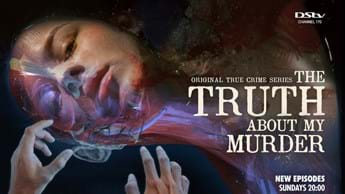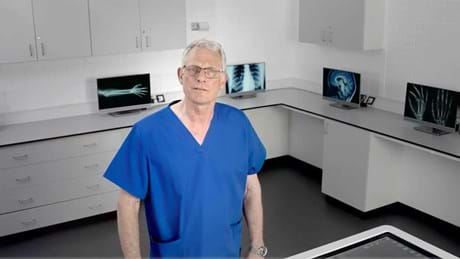Bringing death to light
Dr Richard Shepherd peels back the skin of new CBS Justice true crime series The Truth About My Murder

Over the course of his career, forensic pathologist Dr Shepherd has conducted over 23,000 post-mortem examinations. He has worked for the UK Home Office on high profile cases like the death of Princess Diana, and he advised on the management of UK fatalities following 9/11.
In the new CBS Justice (DStv Channel 170) true crime series The Truth About My Murder, he cuts into ten of the United States’ and UK’s most notorious murder cases – including the killing of professor Peter Farquhar by his fiancé Benjamin Field. Using an Anatomage imaging table (which displays full-body digital images of human anatomy), and detailed real-life forensic reports, Dr Shepherd guides us through the cases. The show features separate interviews with family members and friends, experts and others in the criminal justice system that reveal the motivations and actions of the killers, and their victims.
Read on as Dr Shepherd peels back the skin of the series…
Watch CBS Justice now Set A Reminder
A life in death
You learnt late in your career how to process the stress of the job. How do you do that?
The most useful thing for me was seeing the psychologist, who listened to me, in the depths of my anxiety and depression. Just talking through how to be able to bring up, from my memory, some of the images and some of the thoughts of cases that I've been involved in and look at them professionally. But then remember that I'm always going to put them away. She described it as putting them back in the box and putting the box back on the shelf. You had to consciously do that; you couldn't just walk away from it. The time pressures before had meant that I'd hop from one thing to another, so there wasn't a good shutting down. I also have some hobbies. I fly aeroplanes, I keep bees, things that occupy my brain, practically and intellectually. And I find when I'm doing those things, the pressures of work naturally get pushed to one side and shut down.
How do you handle such painstaking work in a case where there’s national attention and pressure for work to be done quickly?
Managing time is always difficult. But when it when it comes to a murder investigation, by and large, you always have time. You can't not do anything about it for six months or nine months when someone's waiting in prison on remand. But if you feel another test is justifiable, there is always that time. Sadly, in baby deaths where the need to examine the brain of the baby or the child is crucial. But in England there is a real shortage of specialist brain pathologists who can do this. So, there can be a huge delay within the system.
How did you come into The Truth About My Murder?
The production company phoned up and asked if I’d like to do it. I waited for nearly 10 seconds before I phoned back and said, “Yes! That sounds like a great show.” I tell the whole story that runs through each case, and when we get to the forensic pathology, obviously I get quite excited and do my bit. I offered some guidance as to what sort of things they should look for. When they got it down to a shortlist, I looked through the cases trying to find things where we could talk about the body, talk about what the forensic pathologist did, and use this wonderful table that they found.

Outside of the show, had you worked with a tool like the Anatomage Table before?
In a strange sense, I have one on my laptop. But it's very much a digital representation, not the MRI images of real people that you can get on the Anatomage Table. I use it when I'm trying to remind myself of important bits of anatomy that I forget, or if I ever knew them, I forgot 30 years ago. This Anatomage Table is a fantastic, fantastic piece of kit. Its main field now is teaching anatomy to undergraduates. But we have an issue in forensic pathology with presenting evidence to juries in court. There was a time when we just used to give them the photographs. But that's now felt – probably quite correctly – to be really rather challenging to people who’ve never done forensic pathology. And to be suddenly presented with, say pictures of someone who's been bludgeoned with a hammer, is a traumatic experience. Now we can use MRI imaging to present information to juries in a gentler way, but knowing that it's still accurate.
What might people not realise that you can tell by looking at the body?
An examination of any dead body is a complete examination. If someone, let’s say, has been stabbed in the chest, we don't just look at the stab wound and say, “Yeah, they've been stabbed. That's it.” We look at everything, always, both with our naked eye and microscopically. Then we do toxicology and maybe bacteriology so we have a full understanding of this person, and why they've died. People are quite surprised at the peripheral things we might find out about someone.
Watch The Truth About My Murder Season 1 from Sunday, 2 October at 20:00 on CBS Justice (DStv Channel 170) and on Catch Up.
CBS Justice (DStv Channel 170) is available on DStv Premium and Compact Plus. To upgrade your existing package, click here. Or if you'd like to Get DStv, find a service that suits your needs here.



